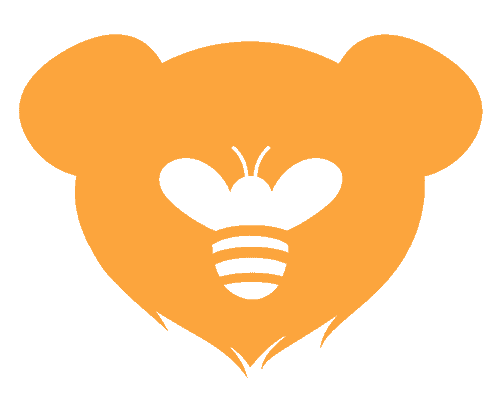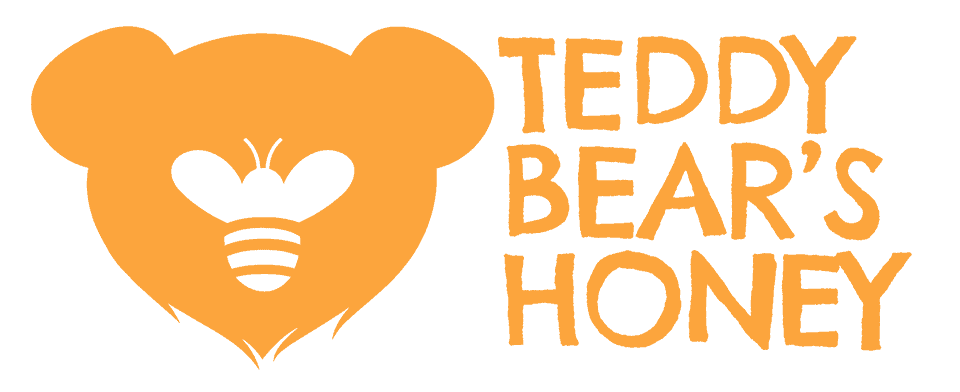Honey is lovely, sweet nectar that humans have been eating for thousands of years. Gathered from honeycombs, we often admire the bees for their hard work producing this liquid gold. However, have you ever considered why exactly bees make honey?
Bees make and store honey to feed them during the cold winter months when there aren’t any blooming flowers to forage from. Honey is high in sugar, making it the perfect energy source for the bees during winter. In addition, honey is also high in nutrients and doesn’t spoil quickly.
While making honey is an interesting and complex one, we are more interested in the why factor in this article. Therefore, we will discuss why bees make honey if it is okay for people to take honey from the beehives, and how much honey bees need to survive.
Why Do The Bees Make Honey?
Remember the last time you’ve been outside on a beautiful summer’s day. In that case, you may have noticed hundreds of bees flying around, gathering nectar from the fragrant flowers. Of course, you already know that the bees collect the nectar to make honey, a delicious, sweet syrup.
What you may not know is why they make honey. There is a common misconception that bees don’t eat honey. This is untrue. In reality, bees produce and store honey as a food source during winter, when there aren’t enough flowers to forage from, and the weather is too bad to fly around outside.
Therefore, bees do, in fact, eat the honey they work so tirelessly to make. Honey is the perfect food source for bees because it is high in nutrients. In addition, honey contains a lot of sugars, making it a high-energy food source. You might be wondering why bees convert the nectar into honey rather than storing it as is (like bumblebees do).
Well, nectar contains about 70% water. This water content means that fungus and bacteria can grow in the nectar, causing it to spoil. Honey, however, has only about 17% water, making it a much more concentrated substance. In addition, the high sugar content in honey makes it much more difficult for bacteria or fungus to grow.
Therefore, the honey lasts longer, and the hive and the colony are protected from bacteria or fungal growth. Honey is a vital food source for bees during the winter months. As such, you might be wondering if it is okay for people to take the honey?
Does Harvesting Honey Damage Bee Colonies?
Animal activists will argue that taking honey from the beehive is morally wrong, and we damage the bee colony by doing so. While this argument has some validity because the bees need honey to survive the winter, it doesn’t tell the whole story.
In nature, many predators take honey from beehives. Honey badgers, birds, and other bees break into the beehive to steal the honey. Although this might concern you, the bees have made provision for this occurrence. To prepare for predator invasion, bees produce far more honey than they need to survive during the winter.
The amount of honey needed by the bees for survival depends on the size of the hive and the location of the bees. For example, a beehive in temperate areas will need about 80 pounds of honey to sustain the queen and colony throughout the winter. On the other hand, a beehive in a warmer climate might only need roughly 60 pounds for the winter because the bees can start foraging earlier in spring.
To put this into perspective, a strong bee colony will produce almost 80 pounds of excess honey per year, leaving more than enough for predators or people to gather. Yet, at the same time, the bees also have enough to survive.
For this reason, sustainable bee husbandry leaves enough honey in the beehive to sustain the bees during winter. Some farmers will also replace the honey with a honey substitute to ensure the bees have enough food to last them for the winter. In this case, harvesting honey isn’t harmful to the bees.
However, when all the honey is removed from the beehive, the bees will not have enough food to last them throughout the winter, and the colony won’t survive. To help the bees forage for nectar, be sure to plant early-blooming flowers in your garden. This way, the bees can start foraging and making new honey early in the spring.
Since bees cannot go out to forage during winter, you might wonder if they hibernate or what the bees do when they cannot fly around.
While some bee species, such as humblebees, hibernate during the winter, honeybees don’t. Honeybees are highly active within the beehive during the winter. They vibrate to keep the beehive temperature higher and avoid freezing to death.
Therefore, the bees require a lot of food during winter. The food should be high in energy and nutrients to sustain them as they work to protect the queen and keep their hive warm. Therefore, honey serves as the perfect food source for the bees.
Now that we have discussed why bees make honey and if it is okay for people to harvest the honey from beehives, you might still wonder how bees make honey.
How Do Bees Make Honey?
The process of making honey is just as fascinating as answering why bees make honey. As we have mentioned, bees make honey using nectar. During the spring and summer, bees leave the beehive to forage for nectar in the surrounding area. They remove the nectar from the flowers with a long, tongue-like structure called a proboscis. They then store the nectar in a secondary stomach, called a crop.
When they have collected enough nectar (from about 100 flowers, weighing almost the same as the bee’s body weight), they return to the hive, giving the nectar to younger, processor bees. The processor bees chew the nectar while secreting an enzyme known as invertase. The invertase breaks the nectar down into simple sugars (glucose and sucrose).
When the processor bees are done chewing the nectar, they place it in the hexagonal-shaped storage units. These units are made of beeswax. Then, the bees flap and vibrate their wings to encourage airflow in the hive. The airflow helps to evaporate the water from the nectar and concentrate the sugars.
This process allows the honey to have only 17% water, whereas nectar has 70% water. Once the nectar is concentrated and has become honey, the bees seal the honeycomb with more beeswax. The honey is now ready for later use.
As you can see, the bees work tirelessly to make and store honey for the winter months. It takes about four months for a new colony of bees to start producing honey. However, you’ll likely only be able to harvest the honey in the second season.
Do All Bees Make Honey?
Up to this point, we’ve discussed why bees make honey, how they make it, and if harvesting honey endangers the bees. However, we still haven’t addressed if all bees make honey.
While there are many different varieties of bees, not all of them make honey. Only two kinds of bees make honey – honeybees and certain stingless bees. Other bees, such as bumblebees, collect pollen and drink nectar. However, they don’t produce honey to sustain them over winter. Instead, only the queen hibernates, and the worker bees die during winter.
Of the honeybee species, Italian honeybees are said to be the best honeybees. This is because they produce more honey in warmer climates and have a mild temper. However, Italian honeybees don’t do well in cold climates and require supplemental feeding during the cold winters.
How Do Bees Make Beeswax?
The final question you may have regarding bees and the honey-making process is where the wax comes from that the honeycomb is made? This question is just as interesting as to how and why the bees make honey.
Bees have a special duct on the underside of their abdomen where they secrete liquid wax. Once dried, the wax turns hard. This wax is used to make the honey combs and seal the combs once the honey is deposited inside. As the bees get older, their bee wax dries up. Therefore, it is the job of the younger worker bees to build and seal the honeycombs.
Beeswax is edible, and many people like to eat honeycomb (the honey while still encased in the wax). As for the bees, they don’t eat the honeycomb and spend a lot of time creating and mending the hexagonal pods to store the honey.
Although beeswax is edible, it is more often used for medicinal or artistic purposes, such as making waxed gauze or candles. Making beeswax simply adds to the beauty of bees and makes us appreciate their hard work even more.
Conclusion
In this article, we discussed why bees make honey, which is to eat it during the cold seasons. We also talked about how bees make honey and beeswax. Then we discussed if harvesting honey is harmful to the bees.
Generally speaking, bees produce far more honey than they need for a season. Therefore, as long as you harvest the honey sustainably and leave enough for the bees to survive, you won’t harm them by taking some of the honey.
References
https://honeybee.org.au/home-sweet-home/
https://www.buzzaboutbees.net/why-do-bees-make-honey.html
https://www.greenmatters.com/p/why-bees-make-honey
https://www.newscientist.com/question/bees-make-honey/
https://www.terminix.com/blog/education/why-bees-make-honey/

